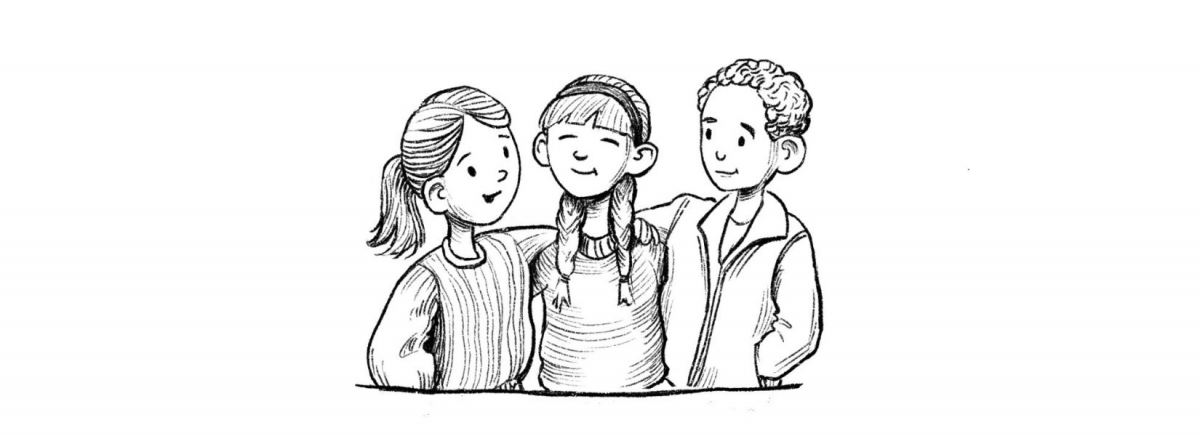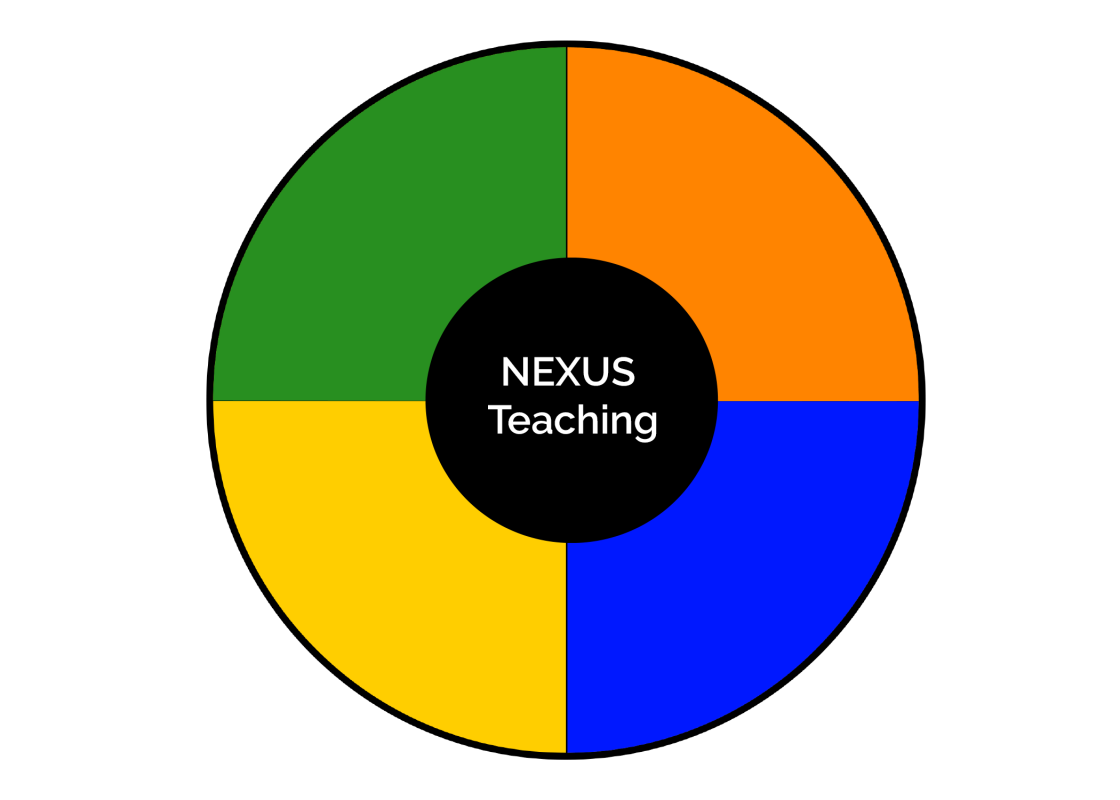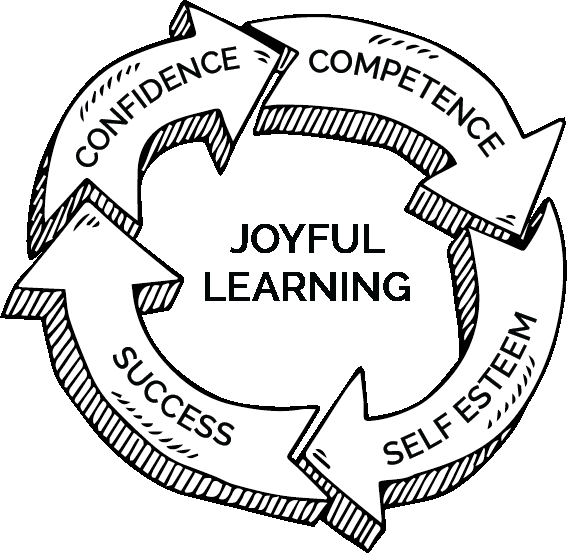Chapter 1: Get to Know the Kids

To Scott, every kid is a potential scholar: Kevin was a skinny blonde with oversized glasses and a funny half grin. When Kevin entered fourth grade, he could not read. His time in resource over the years kept him out of the social structure at school so he didn’t have friends. His mom reported that he was severely depressed. Getting him to attend school every day felt like a battle and his parents felt desperate. However, Kevin loved to draw, and he was good at it. To entice him to attend school, the creative principal invited him to join my first grade gifted and talented class as my assistant art teacher. Kevin drew alongside the others and spent most of his day as the best artist in class, modeling for others. He gained confidence and positive relationships as well as further developed his hand-eye coordination, visual discrimination, visual memory, and concentration, which were then explicitly connected to skills needed for reading. Drawing with the first grade soon replaced his time with the resource teacher. After art one day, Kevin agreed to stay and read Charlotte’s Web with the class, after which he eagerly participated in the reading instruction and other academic subjects with the accelerated first grade students. By the end of the year, he was reading at grade level and carried himself with a new level of confidence.
The greatest opportunity for a teacher is to get to know their students, to find their strengths, and build on them. Many things can interfere with learning opportunities, such as underexposure, learning disabilities or delays, situational stresses, overprotection, trauma, or any life situation that limits students’ abilities to explore and develop their passions and potential. The more teachers learn about students, through careful observation and listening, the more they can find opportunities for success, address student needs, compensate for disparities, and align what needs to be learned with their strengths and interests.
Instruction, discipline, and assessment strategies must be tailored to the individual needs of each student. Strategies are most effective when teachers take time to find and address the root cause of the issue. Children learn best from people they like, and who they believe like them. Competent professional teachers, who know their individual students, make professional decisions on their behalf to personalize the learning for each child.
Scott shares this story: Tyler was enjoying his career as a professional drummer in LA. when I got his Facebook message. I recognized the smile in the photo. From 20 years before, I remembered his dimples on his blonde-framed chubby cheeks. In his time at school, Tyler had been frustrated to tears almost daily when he was compelled to comply with traditional school practices. He hated school, throwing tantrums often. Tyler spent most of his time with his head down on his desk just trying to survive the day. He would tap his feet and hands to help him relax. I noticed he had a natural sense of beat and played complicated rhythms. I bought him a rubber drum set with multiple drum pads and drumsticks for pounding and sent it home with him and his mom. I told him that he could play it all he wanted for a few weeks at home and then he could bring it back to school and keep it on his desk so that when he was anxious, he could play the drums. The drumming helped him relax. As he relaxed, he engaged more deeply in instructional activities and increased his positive interactions with others. He began to enjoy coming to school. His drums stayed on top of his desk, never out of his sight.
By observing Tyler’s needs and addressing them in a creative yet simple way, Scott changed a life for good. This chapter will outline strategies to help teachers connect with students, the first step in timeless teaching.
Play and Engage in Authentic Conversations

Arts engagement invites conversation on many levels. Scott frequently used various art forms as a means of connecting with the class: Along with drawing and art making, I play my guitar and sing songs with the students in my class. I also perform for them so they can be an audience. Sometimes music is a reward, other times it is just for fun. We make up silly songs and the students dance to the music. We take turns telling stories and acting out vignettes. Students take risks and experiment with new ideas. They learn to play. They navigate social expectations, take turns, and express their personal identity within a group. I notice what makes them laugh, which is a clear indicator of how they perceive the world. I notice how they express themselves, revealing a strength. Their biggest concerns are often revealed in these playful times. A good lesson inspires more questions than it answers, compelling students to continue learning well beyond the school day as they discuss new ideas with their friends and family members.
Arts activities, as described above, provide various types of conversations and opportunities for teachers and students to express their personality and share their talents. Singing together, listening to music, dancing to music, read-alouds with character voices and facial expressions, are engaging ways to build relationships. Each day, students show up at school with their own interests and strengths that often go unnoticed. To bridge that gap, teachers can discuss or engage in music, art, sports, hobbies, current news, and other interests that reveal strengths, weaknesses, and interests to meet the students where they are. Furthermore, these activities can represent project-based learning in action where literacy strategies and culminating products connect to bigger ideas and themes across disciplines. Observing student preferences and ability during these activities will help teachers identify and address student strengths, likes, and needs to reveal openings that any teacher can immediately put to use. There is power for students in knowing that what they bring to school is an asset to classroom learning and teaching.
Observe Developmental Indicators
There are physical, cognitive, and social and emotional indicators for learning readiness that provide valuable information about students, including their gifts and challenges. (Teachers may also want to consider indicators for language development.) As students grow, the developmental indicators can also be a reference to identify stress triggers. Sometimes tasks that may seem easy to perform become difficult under stress. For example, when people are nervous, they may lose their ability, even momentarily, to perform the task; they may stammer, drop things, or freeze. Observing the status of, or a change in these indicators, provides valuable information about what may be needed to improve performance. When teachers notice areas where specific indicators seem out of sync with the age and general development of the child, teachers can reflect as to whether it is situational or developmental and consult with other professionals for specific recommendations.
Below are examples of what to look for in each category.
- Physical: this includes motor skills and sensory assessments.
- Can they smell things in the room?
- How is their vision?
- Can they hold a pencil, draw, sketch or use other fine motor skills?
- Can they mimic sounds? Identify sounds? Respond to sound signals?
- Can they articulate words? Interpret words?
- Can they skip, hop, balance, or perform other gross motor skills?
- Are they agile or flexible?
- Do they like to touch things?
- Cognitive: this includes questioning, analyzing, synthesizing, making connections, abstract thinking, and applying what they know to perform tasks.
- Do they remember what happens?
- Can they pay attention? Follow directions?
- Can they transfer information from the board to their paper?
- How do they use space on a paper? Do they use the whole page or just parts?
- Do they formulate questions?
- Can they imagine? Visualize? Think abstractly?
- How is their vocabulary?
- Do they have a sense of humor?
- Do they see irony? Observe the ludicrous? Notice hyperbole?
- Can they explain a situation?
- Can they make analogies?
- Can they make connections? Even absurd or abstract ones?
- Social and Emotional: this includes understanding and communicating with self (interoception) and others.
- Can they describe how they feel?
- Can they regulate their emotions?
- Can they advocate for their own needs?
- Can they look you in the eye?
- Do they show empathy to others?
- How do they problem solve with peers?
- Are they overly self-focused?
- Do they understand they are part of a bigger picture?
- Are they self-reflective?
- Can they talk to a group? Read aloud?
- Can they read body language and/or nonverbal cues?
- Do they understand the traits of a character in a story to predict the behavior of the character?
Identify Personal Indicators
It also helps to notice a student’s personal way of living in the world. What choices do they make when they relate to others? For example, when do students hesitate and what do they avoid? Or what opportunities do they seek? Consider these items for observation:
- How does the student relate with adults?
- How does the student interact with other children?
- Do they compromise?
- Who do they play with? Do they make friends?
- How do they prefer to play? What do they like to do? Alone? With a friend? In a group?
- What do they like and dislike?
- What do they talk about? What do they collect? What do they read?
At the beginning of the year, teachers can invite parents and the child to meet with them and evaluate selected student skills. This establishes a shared understanding of student ability and invites the parents to work with the teacher to support the student. The goals set and commitments made during this meeting create a vision to serve the student. Advancement towards goals can be revisited during the year in casual exchanges and at parent-teacher conferences.
When meeting with the parents, additional information about children can be observed and discussed (after all, the child may grow up to be much like their parents and are at least influenced by them). Parents deserve to see evidence that the teacher wants to get to know the child. Conversations could include:
- Are they responsible for pets at home?
- Which extracurricular activities do they participate in?
- What other external pressures exist?
- How much time do they spend on video games, TV, and social media?
- Do they have the time and support they need for schoolwork, rest, etc.?
- How do they get along with siblings?
- How do they manage their free time?
A teacher can also observe how the child and the parent/guardian relate. Does the child feel supported by the caretaker? Does the caretaker give answers for the student? Is the guardian objective? Overly negative or positive? Does the caretaker make excuses for the student? Does the student accept responsibility? These are subjective questions for reflection and should never be used to judge others, only to refine sensitivity and increase the teacher’s empathy and ability to serve the student.
Apply Indicators of Personal Preferences & Temperament

In education, understanding people is as important as understanding the content areas being taught. There are many great theories and tools from the field of psychology for learning about and understanding people that are applied in education, business, and in industries such as health care. Find your favorites and use them. For educational use, George Nelson, author of Breaking the Learning Barrier for Underachieving Students, promotes the use of a simplified version of the Myers Briggs indicators that recategorizes the personality types into four groups, each identified by a color: Blue, Gold, Orange, or Green. He has developed a quick assessment for youth. These are not intended to label students, but to aid in observing their behavior to get to know them better in order to help them succeed. These categories instigate reflection to build understanding about how they interact with other people and the world around them. In simplified form:
- Blue students focus on people’s feelings and social skills and value being liked.
- Gold students focus on rules and policy and value being organized.
- Orange people are adventurous, competitive, follow their passions, and value having fun.
- Green people focus on accurate information and logic, are curious, and value competence.
The categories provide a shorthand to help teachers deliberately consider the various needs of individual students. Keep in mind that all children are a mix of all the of the colors, but most will lead with one color as their strength. Knowing children’s strengths can be helpful when trying to connect and motivate different learning types. Experienced teachers will also know how to incorporate teaching strategies that can reach each child simultaneously, within the same lesson. This is also known as “teaching in the NEXUS”.
In simplified form, NEXUS teaching is represented in these five principles:
- Allow choices
- Do the unexpected
- Relate to the values of the learner
- Allow for the humor of life
- Elevate thought
When teachers focus on the primary needs of different types of learners while including these NEXUS principles, a broad range of students can be reached. To learn more about NEXUS teaching, visit advancingartsleadership.com.
Scott shares this reflection on how using this color assessment can also help build relationships with parents and families: The results of the Myers Briggs testing were very helpful at parent teacher conference as it gave me a way to show parents a new perspective of their child. I explained the 8 indicators and then showed the results of how their student scored him/herself. After sharing my insights about their student as well, the parents knew I cared about and understood their student. Often parents told me that seeing their child with this new perspective improved their relationship with them and helped them be more effective parents. Once the parents trusted me, they would more often do what I asked, which was read and practice math facts with their child every night. This parental focus contributes significantly to student success.
Often the most valuable information about a student’s growth is revealed in the way they behave, including their facial expressions, gestures, and communication. Growth is also observed in the choices they make and the stories they share, or don’t share, revealing their thoughts, perspectives, and personal lives. These indicators are often not measurable quantitatively but are understood through shared experiences and remembered within the relationships that are built.

Teacher judgement is also developed through strategic application of information gleaned from careful observation of and listening to students. Teachers who build relationships to find what motivates a student can then inspire hope by providing learning opportunities that guarantee success. Students don’t want to be told they are good at something; they want to experience being good at something. Success builds confidence. Confidence builds competence. Competence builds self-esteem, which empowers students to do the hard work of learning, joyfully.
Tracking Sheet
Inventory of Student Skills, Abilities, and Preferences
Downloadable copy is available here.
Name:
Allergies:
Strengths:
Things they like:
Thinks they dislike:
Things we have in common, or shared values:
Physical Skills--balance, skip, hop, agility, hearing, vision, smells:
Cognitive--ask questions, be curious, be attentive, listen, auditory processing, follow directions:
Social--look people in the eye, show empathy to others, are they interested in others? Can they stay on topic in a conversation?
Emotional Skills--self-regulation, self-awareness, understands they are part of a bigger picture, has perspective about self and others:
Basic Drawing--spatial relationships, visual memory, using space and negative space, hand eye coordination, can they write on a line, fine motor skills:
Personality preferences priority objective--knowledge/competence, emotions/people, rules/organization, fun/adventure:
Rate on a 1-5 scale
- How developed is their vocabulary?
- Do they draw analogies and connect information?
- Do they have a sense of humor?
- Do they retain information/remember conversations from day to day?
- Does the student accept responsibility?
What are they responsible for at home? Pets? Siblings? Chores?
Daily screen time and priority activities:
Relationship with the parents/caretakers:
Want to Know More?
Online report: “A Nation at Risk to a Nation at Hope, Recommendations from the National Commission on Social, Emotional and Academic Development”
Breaking the Learning Barrier for Underachieving Students by George Nelson
The Four Lenses Kit and other tools to identify student preferences are available through Clime International or fourlenses.com.
Reflection
- What do you value most in life?
- How do those values inform your daily decisions?
- What are your best traits when you work with children?
- Compare and contrast your learning style and values to a student who differs from you.
- List three ways you can learn more about your students.
- What else do you know that relates to this chapter?
How would you rate the overall quality of this chapter?
- Very Low Quality
- Low Quality
- Moderate Quality
- High Quality